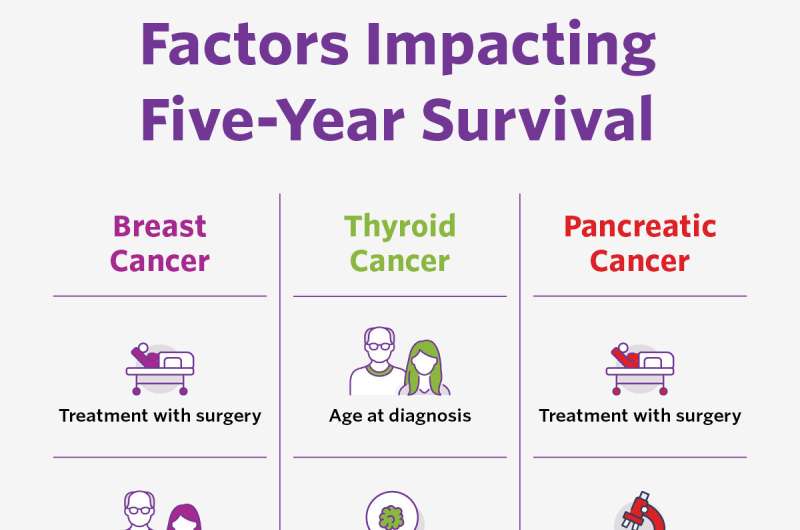
Machine Learning-Powered Cancer Survival Calculator Reveals Key Factors Beyond Cancer Stage A groundbreaking prototype of a cancer survival calculator, developed with the aid of machine learning, has uncovered a significant revelation. For three distinct cancer types – breast, thyroid, and pancreas – the machine learning model demonstrated that there are more critical factors influencing patients’ survival than just the conventional cancer stage.
The primary objective of this innovative project was to estimate the five-year survival rates for patients diagnosed with these three different types of cancer. While traditional methods tend to rely heavily on the cancer stage as a primary predictor, the machine learning model uncovered a more intricate web of influences on patient outcomes.
The research highlighted a range of specific characteristics relating to patients, tumors, and their chosen treatments that exhibited a substantial impact on survival rates across the three different cancer types. These findings could potentially revolutionize the way doctors and healthcare providers assess and predict cancer outcomes.
The significance of this discovery extends far beyond the immediate scope of these three specific cancers. It underscores the vast potential of machine learning and artificial intelligence in healthcare, as well as the need to move beyond simplistic single-factor predictions to a more comprehensive and personalized approach.
In practical terms, this prototype could lead to more accurate and individualized prognosis and treatment planning for cancer patients. By taking into account a broader array of factors, healthcare professionals can better tailor their care to the unique needs of each patient, ultimately improving survival rates and the quality of life for those affected by cancer.
This research not only highlights the transformative power of machine learning but also the evolving nature of cancer research and treatment. It reminds us that as technology advances, so does our ability to understand and combat one of the most challenging diseases humanity faces.
Last Updated on: Saturday, October 21, 2023 7:25 am by Anu Priya | Published by: Anu Priya on Saturday, October 21, 2023 7:25 am | News Categories: News, Business, GENERAL, Health
About Us: Business Byte covers a wide range of topics, including India news, business updates, startup insights, technology trends, sports, entertainment, lifestyle, automobiles, and more, led by Editor-in-Chief Ankur Srivastava. Stay connected on Website, Facebook, Instagram, LinkedIn, X (formerly Twitter), Google News, and Whatsapp Channel.
Disclaimer: At Business Byte, we are committed to providing accurate, reliable, and thoroughly verified information, sourced from trusted media outlets. For more details, please visit our About, Disclaimer, Terms & Conditions, and Privacy Policy. If you have any questions, feedback, or concerns, feel free to contact us through email.
Contact Us: businessbyteofficial@gmail.com || ankursri983@gmail.com